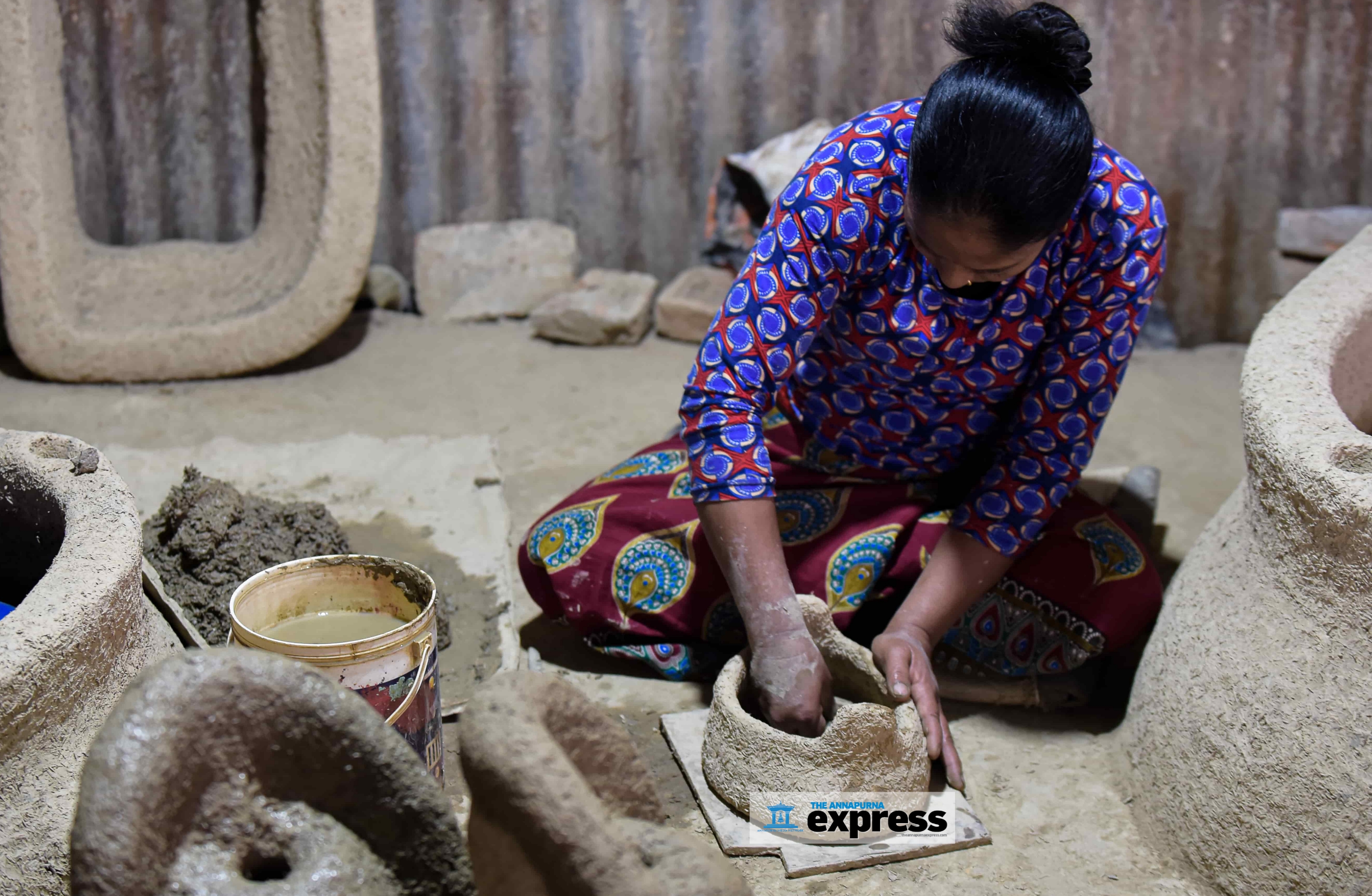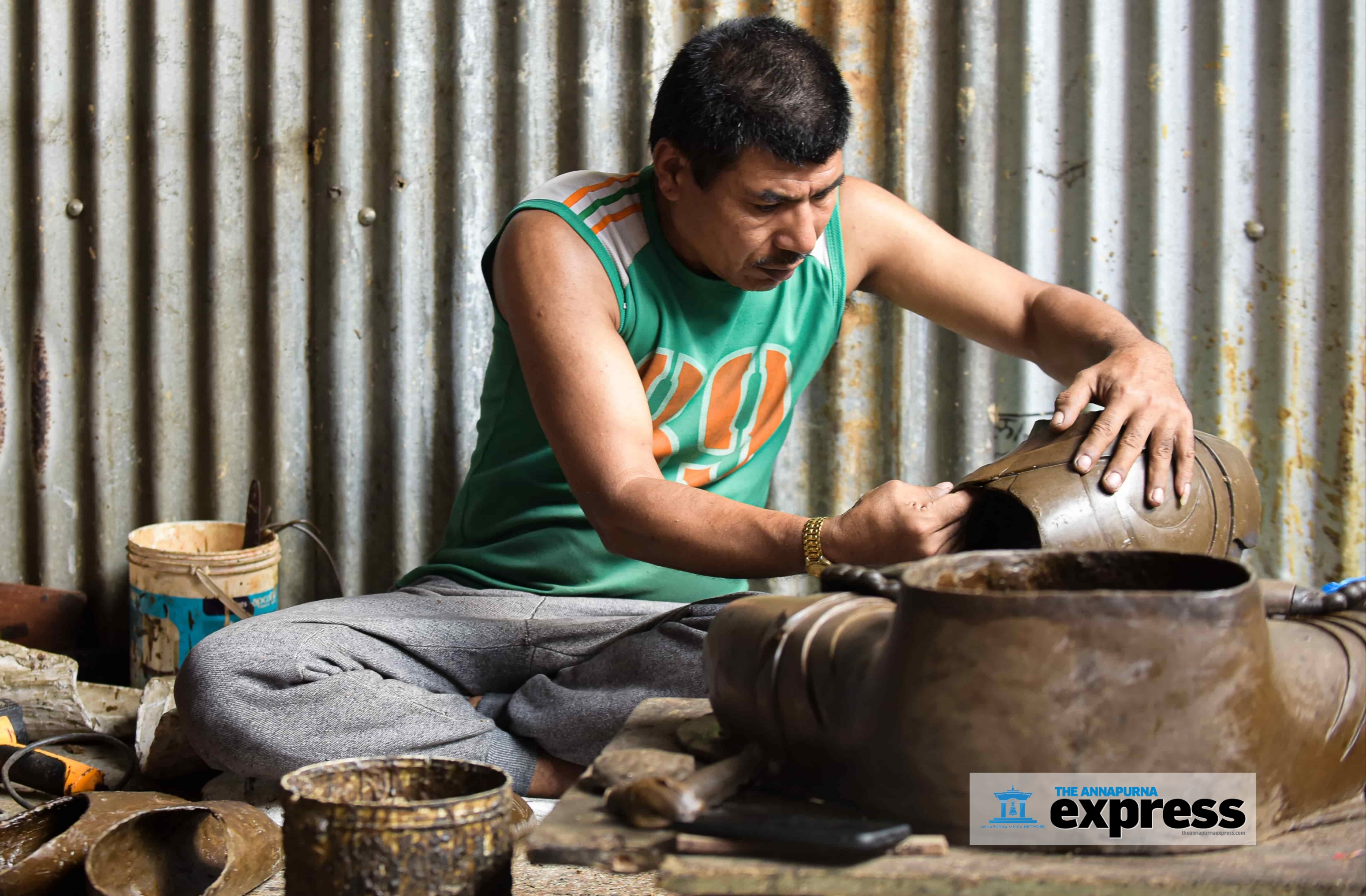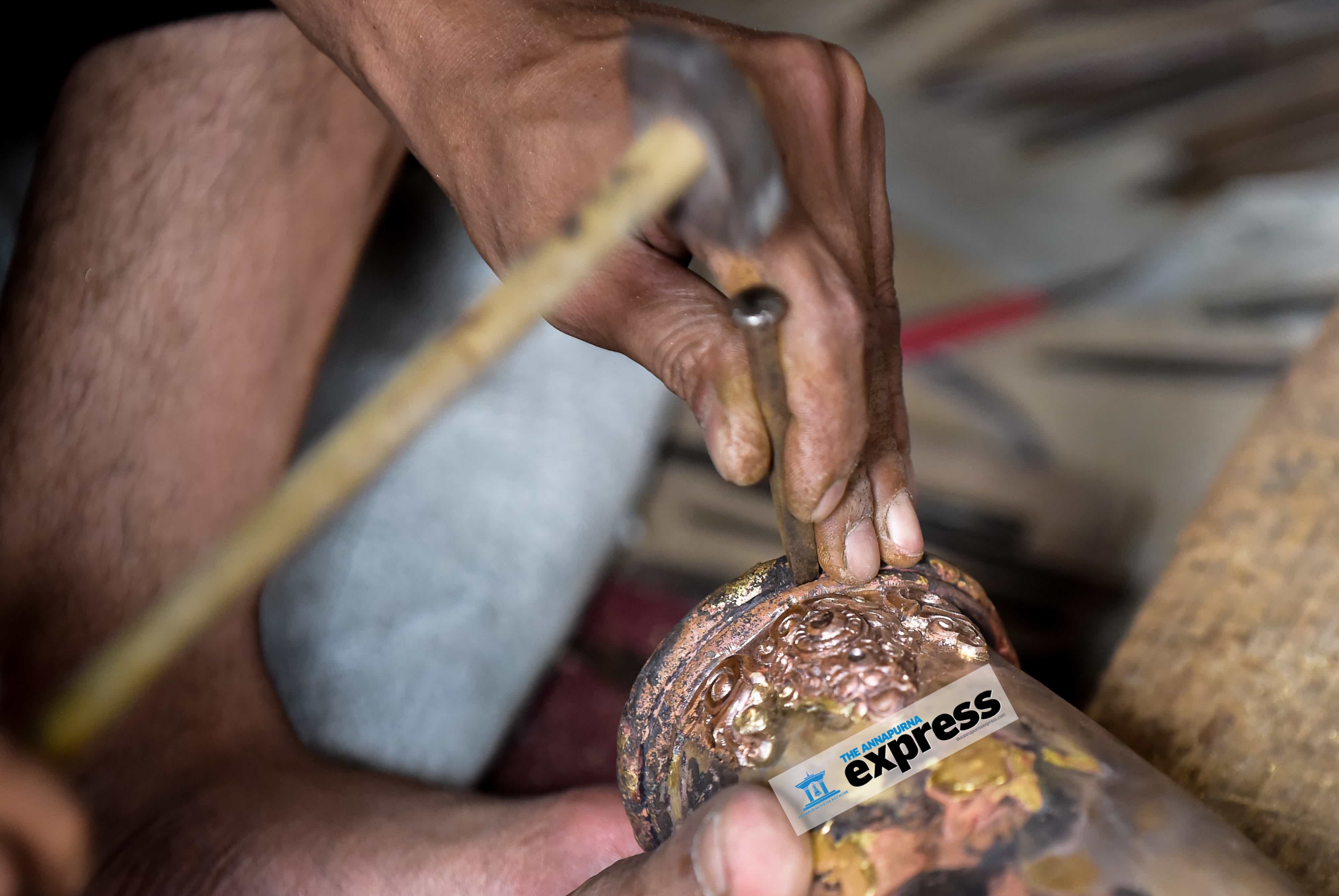The Patan area of Lalitpur is known for its rich cultural heritage, which has been passed down generations. No wonder so many artisans reside here, plying the trade of their ancestors. Shailendra Maharjan is one of them. He specializes in the art of bronze sculptures of deities, something he learned from his father.
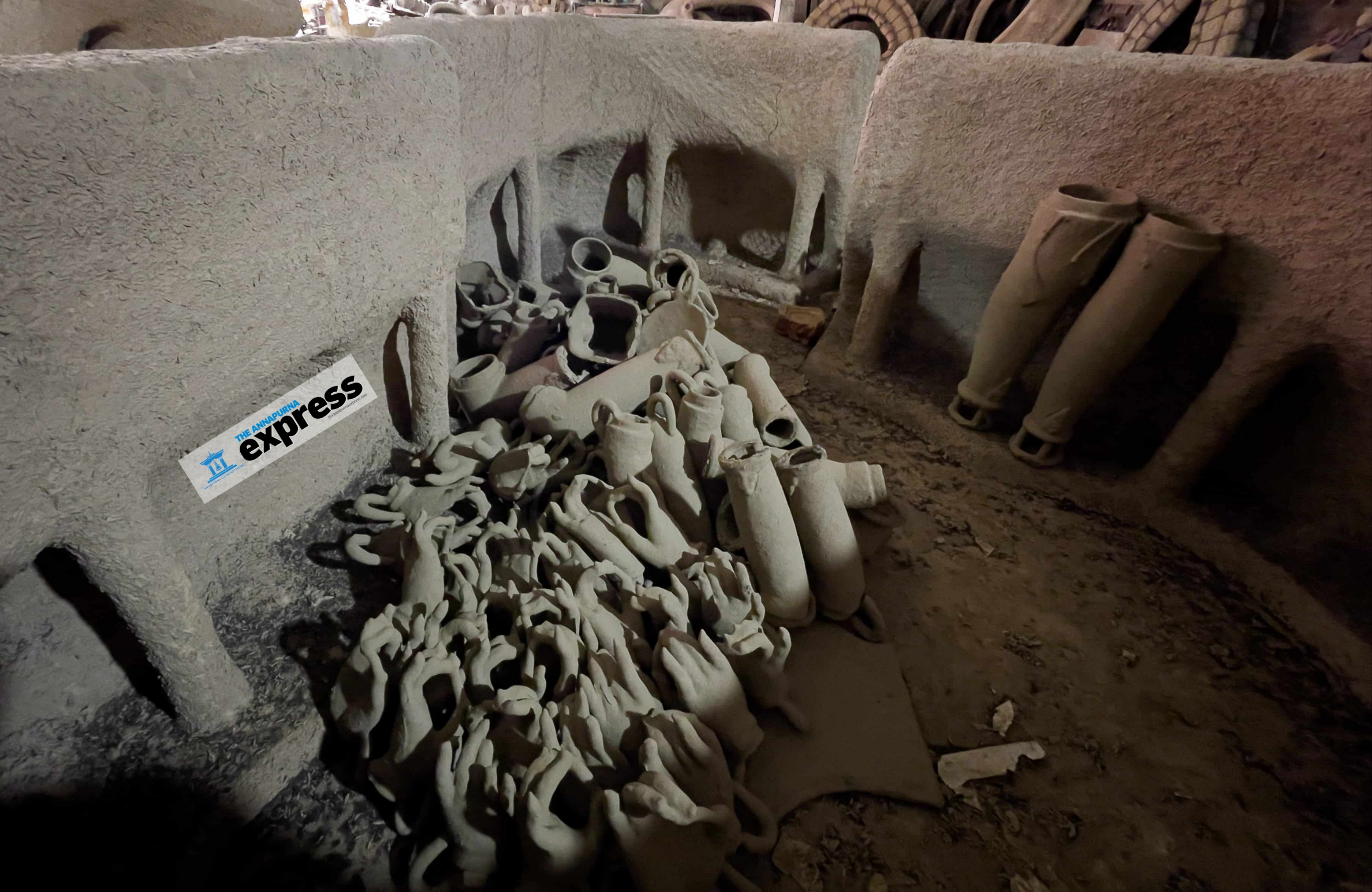
This week I visited Maharjan’s workshop at Patan’s Bholdhoka to find out more about the art.
There are several artisans at the workshop, each with a specific skill required to produce exquisite sculptures, but it is Maharjan who designs the masterpiece and sculpts the visage of the deity being made. He has worked in this field for over two decades in order to perfect this art.
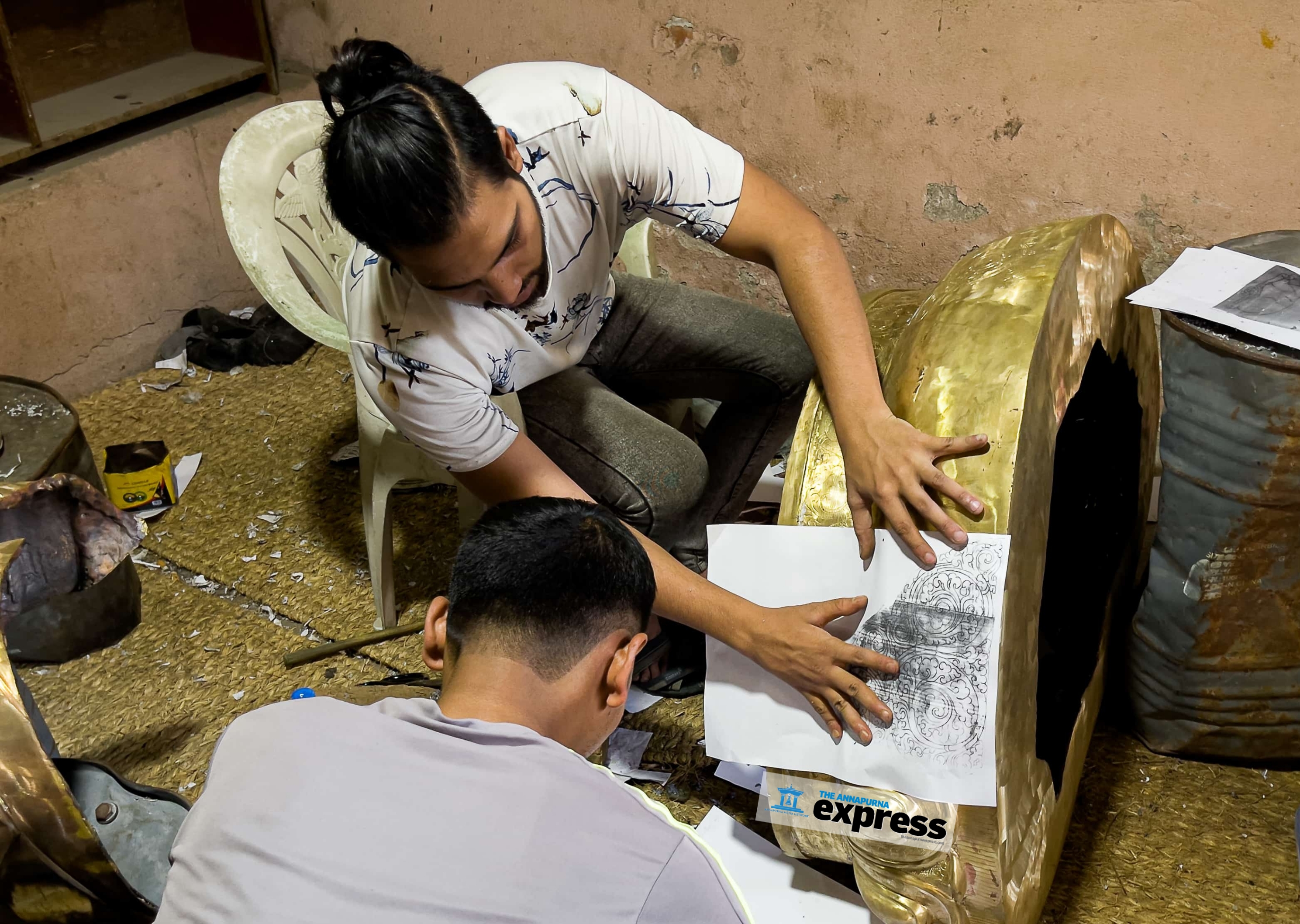
For any sculpture, Maharjan explains, “you need the masterpiece”, a mold made with the mixture of clay and Benzoin resin by heating them together. Heat is mandatory to bring the mixture in shape. Without it, the mixture hardens in no time.
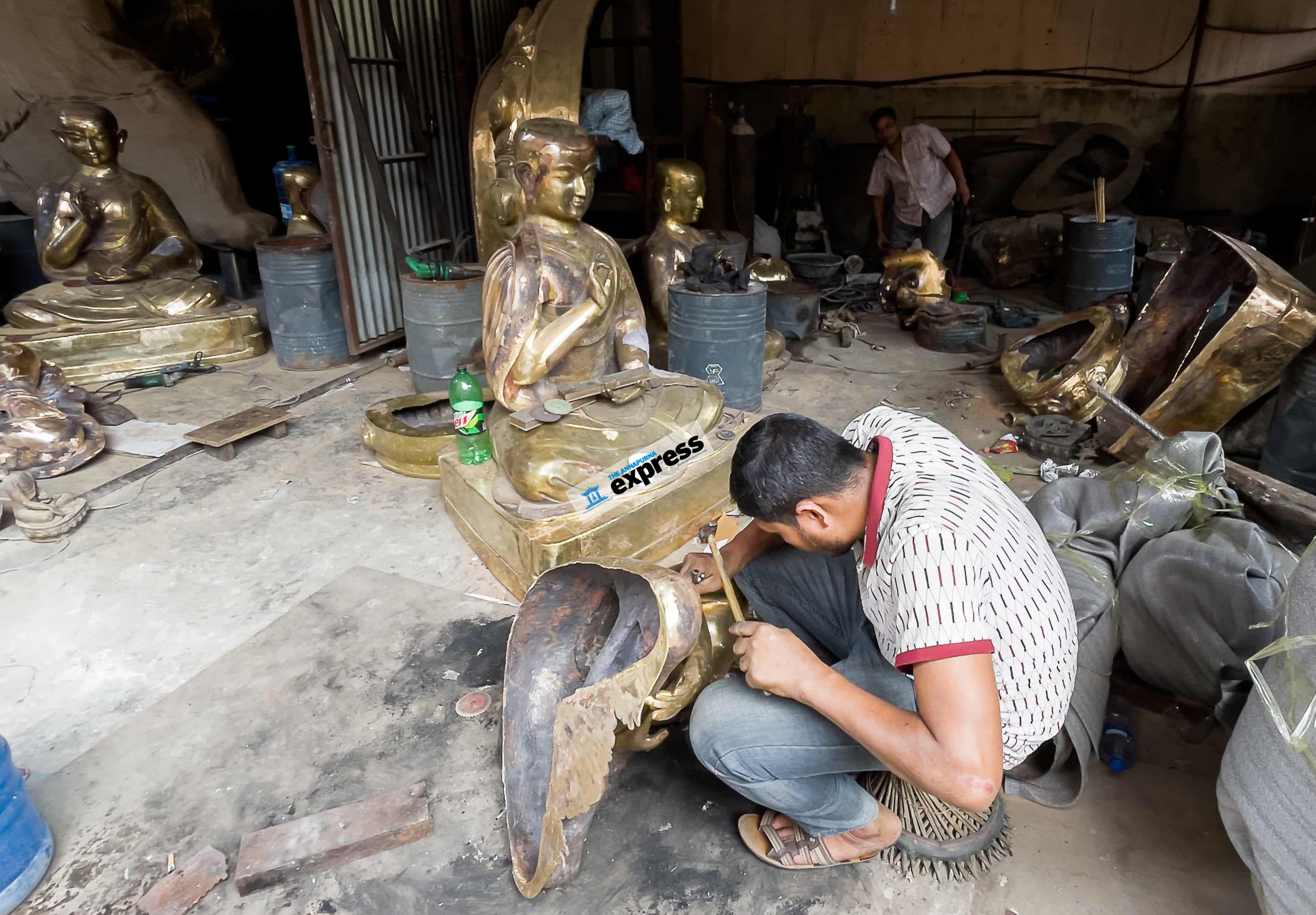
Once the masterpiece is prepared, it is now time to replicate that shape with the melted copper. To create a hollow space to pour the molten copper into, the masterpiece is covered with a mixture of mud and chaff and left to dry in the sun for a couple of days. When completely dry, it becomes rock-solid. It is then taken to the coal burner, where the clay-Benzoin resin mixture melts from the inside. The melted mixture is then removed, leaving just the outer layer with a hole inside.
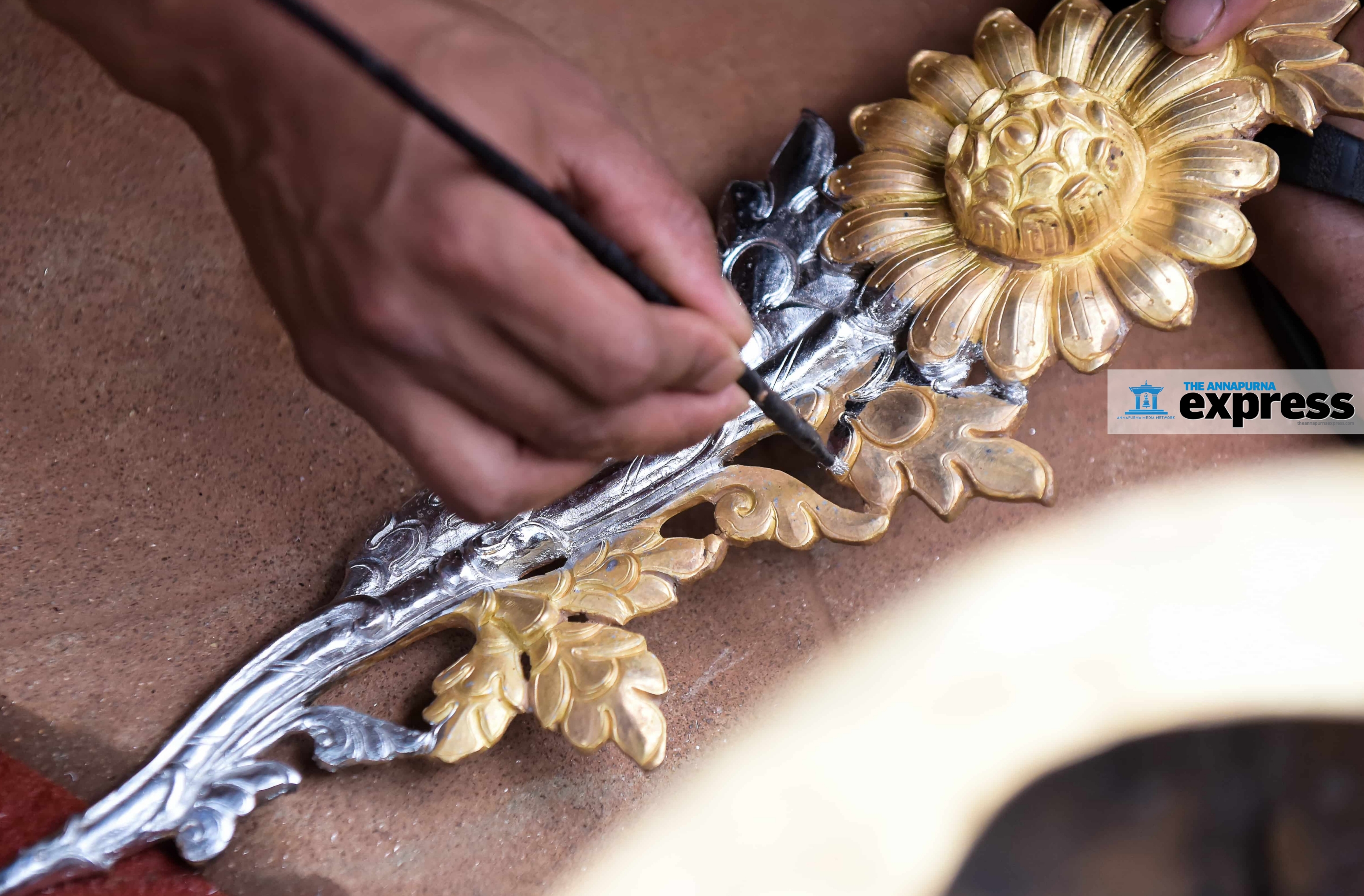
Once the poured molten bronze has completely cooled down, the mold is broken using a hammer, revealing the sculpture. Sometimes the sculptures turn out to have some holes and patches, which are mended with the use of a hammer and welding. For large statues, Maharjan says, parts of the sculpture have to be made one at a time and attached later.
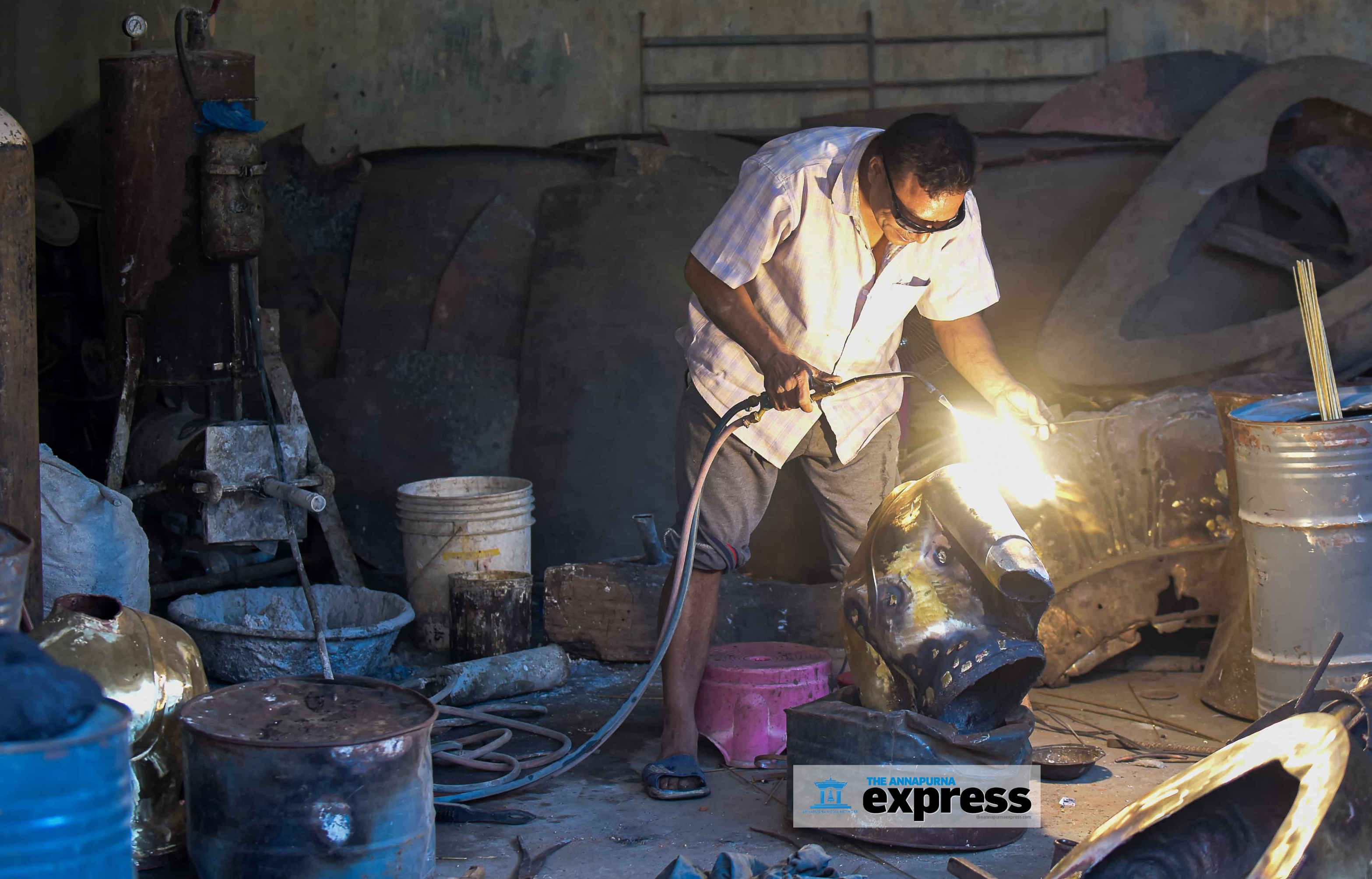
After that, it is all about final touch-ups. First, the sculptures are given some intricate carvings. They are then plated with a mixture of gold and mercury, giving them a silver color. The next process includes the heating of plated sculpture in fire, during which the mercury evaporates, leaving the sculpture golden. The gold used for the face of the sculpture is 24-carat, while the body uses gold of comparatively lower quality.
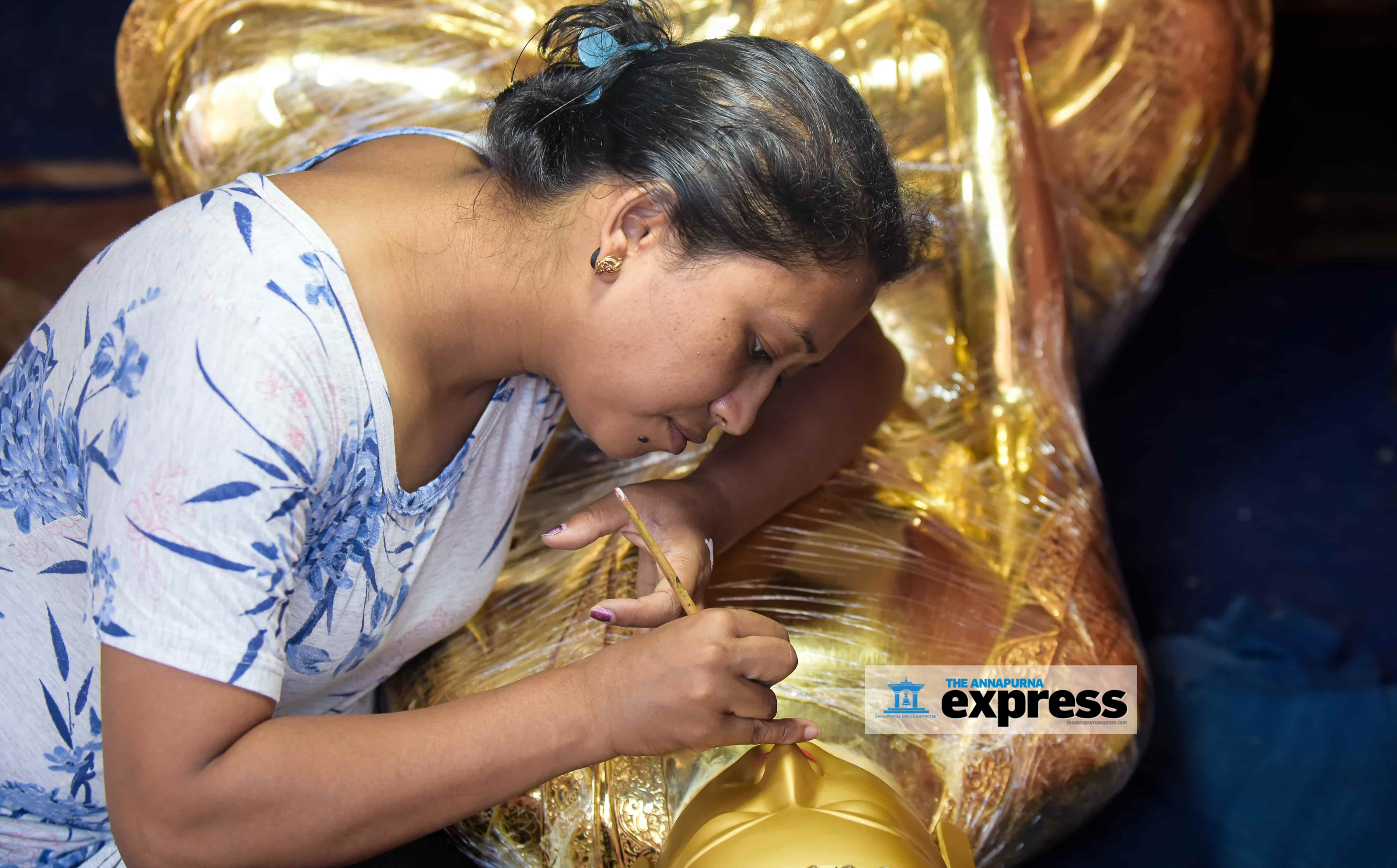
Now the only thing left to do is make the sculpture shiny. This process is called buffing.
Lastly, the face of the statue is painted with normal colors, after which the sculptures are ready for delivery.
“Some sculptures can be as large as 12ft and could cost anywhere between Rs 6m and Rs 10m.”
